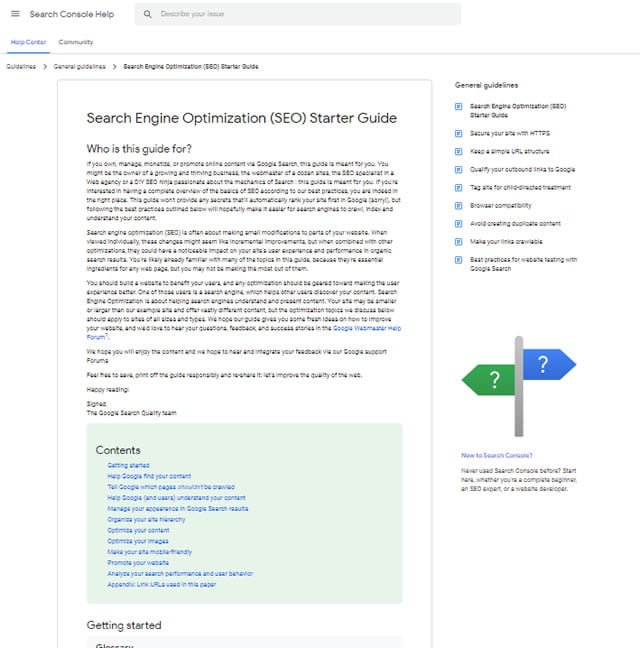The definition of a successful website is one which promotes your business in a way that improves your outcomes. That doesn’t always mean a direct increase in sales or higher profit margin. Sometimes it will help with those indirectly though through a reduction in costs or an improvement in customer relationships.
Over 10 years ago Smashing Magazine published an article extolling the virtue of usability and utility as good website design principles and that hasn’t changed a lot other than the undeniable need to accommodate search engine friendliness.
Getting it right starts with the construction, which is much like building a new house, it requires the right foundations to ensure that when completed it meets your expectations and needs.
Regardless of what your intended outcome, a successful website relies on getting 3 things right during the construction phase.
1. Good Design
The goal here is to achieve a design that will appeal to the widest cross-section of visitors from your target market. Unless you really want to push the envelope that sometimes means going with something slightly less daring and slightly more beige. How do you get that right? Well, there is no magic formula for a successful website but there are some important do’s and don’ts.
Do’s
- Do rely on the advice of your web designer. Good web designers usually have years of experience in their field and can call on that knowledge to incorporate what they know works and leave out what doesn’t. If you are lucky you will get a web designer who has some marketing experience that can be added to the ingredients for a well rounded design.
- Do ensure that if you request a change to the initial design of your website that it is because it will improve acceptance by your audience. The website designer may have designed it that way for a reason (remember they are supposed to be the one with the expertise).
- Do try to make your website as engaging as possible by inviting user interaction.
- Do make sure that your site is pleasing to the eye (the collective eye – see point 2 in the Don’ts section) with a cohesive choice of colours and fonts that give maximum readability.
- Do include enough detail to ensure that your website is a source of valuable and accurate information.
- Do make your website easy to navigate with clear structure and a hierarchy that enables easy progression through levels of information.
- Do include graphics and images to make information easier to digest and comprehend while breaking up more complex material into smaller sections.
Don’ts
- Don’t allow a web designer to use your website as a platform for their creativity. A web designer who panders to their own design flare will produce a website that may be asthetically exceptional but a total failure in other areas.
- Don’t assume that everyone shares your taste. It can be very easy to assume that everyone shares similar likes and dislikes in how a website should look. It is not uncommon for clients to insist on specific design features because that is what ‘they’ like but which may be at odds with what their market likes.
- Don’t add unnecessary features. If it serves a purpose fine, but if you want it included because you think it is trendy or modern then leave it out. No gimmicks.
- Don’t assume there is an ‘easy out’ when it comes to ensuring your website is a success. Achieving and maintaining a successful website is a long-term and often time-consuming process.
2. Covering Technical Needs
Acceptance by search engines and ease of use by visitors are two of the key technical aspects to consider.
Page load speeds, device friendly designs, usability and so on are also not just important for real people they are important to the search engines visiting your website. Why? Because the search engine rankings highly value aspects of your site that are important to humans, and they are getting better and better at identifying what those features are.
While the gap between providing information suitable for human consumption and that provided for machine consumption closes there are still technical aspects that must be present and correct to satisfy search engine requirements. Normally these technical aspects are better left to your web developer who will know what features you need to make your website as search engine friendly as possible but they include:
- meta data including the correct use of tag attributes
- keywords and phrases (your web designer may embellish some of the copy for your website to ensure search engine markers are present)
- optimised content (including images)
- security
- site maps and crawl files
- best practices for URL’s and navigation structure
- preventing duplicate content
- the effective use of links
While this isn’t an all inclusive list the internet is full of resources and some of the best are those provided by the search engines themselves among which is a basic guideline on search engine optimization provided by Google themselves.

3. Balancing the First Two
The final piece to the puzzle is ensuring that the first and second keystones are balanced perfectly. After all, there is no point in having the best looking website in the world if no one can find it and there is no value in having the search engines listing your website highly if visitors to it won’t engage with it (it is unlikely that it will be listed well anyway due to the weight search engines give to the popularity of a site).
Although it might not look like it there is a lot of overlap between the design aspects and technical aspects they differ in that the design aspects are mostly visible to humans and the technical aspects are mostly visible to machines i.e. search engines. As artificial learning and intelligence become more and more important in the mix it may not be so important to ensure that both sides of the coin are equally represented in website design but that time has not yet come.
Conclusion
Not every successful website will score 100% in those 3 keystone areas and the success of a website is not always gauged on increased sales (have a look at the 27 top designs in this Blogspot article (https://blog.hubspot.com/marketing/best-website-designs-list) but your website must be a contributor for your business and a good foundation will help that happen.

The road to website failure is lined by plenty of people who think that anyone can design a website. However, employing a web designer who makes good use of the 3 important keystones of clever design, covering the technical aspects and good balance of the two will ensure that success for your website will be far more easily obtained.


